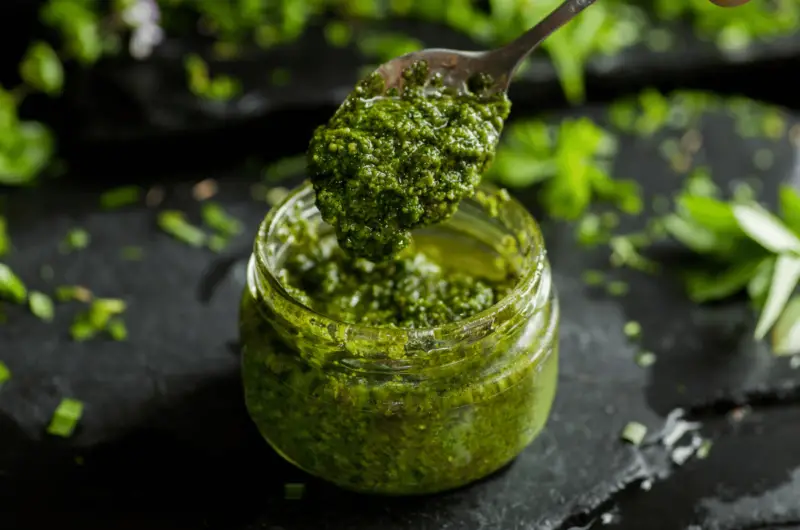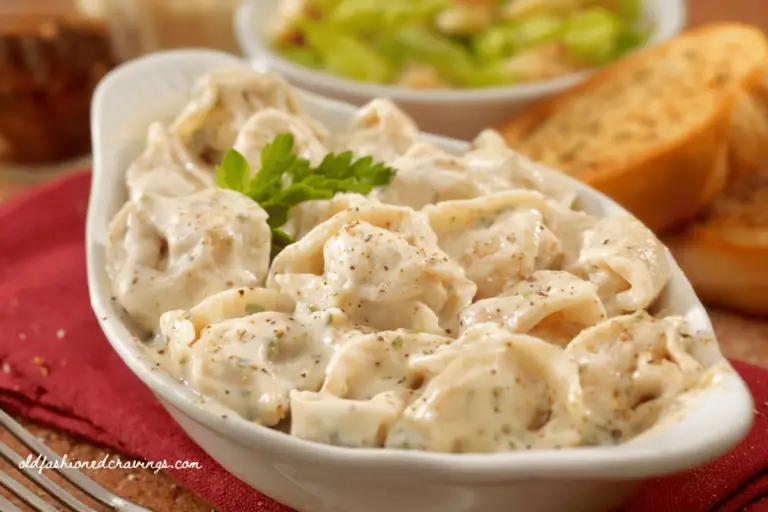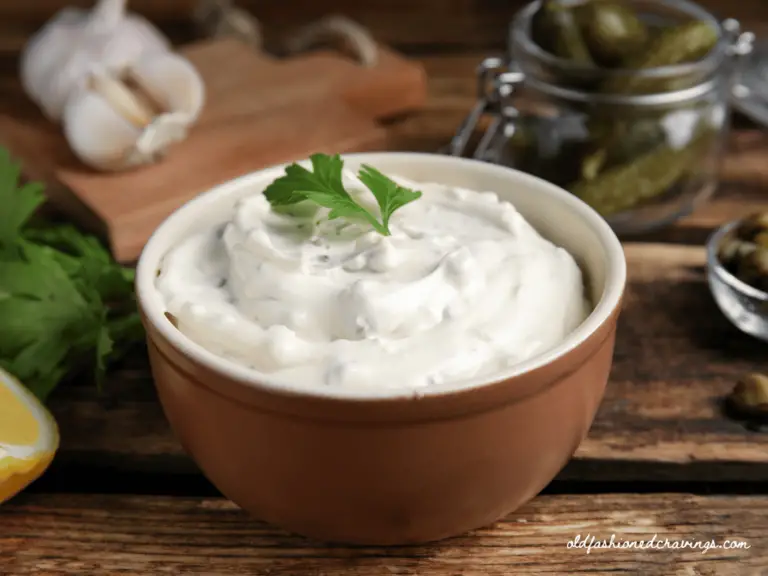Homemade Fresh Basil Pesto Recipe
🚨Be sure to leave a 5 star rating if you like this recipe!🚨
Creating your own fresh basil pesto at home is a game-changer for any home chef. Not only is it vibrant and flavorful, but it also allows for customization to suit your palate and dietary preferences.
Homemade pesto is free from the preservatives and added sugars often found in store-bought versions, ensuring you’re enjoying the fresh, natural taste of each ingredient.
Five Reasons Why Homemade Pesto is Great for You:
- Full of Antioxidants: Fresh basil, the star of the sauce, is loaded with antioxidants, which are great for your skin and overall health.
- Heart-Healthy Oils: By using high-quality extra virgin olive oil, you’re getting a good dose of heart-healthy monounsaturated fats.
- Nutrient Control: Making pesto at home allows you to control the amount of salt and avoid preservatives, leading to a healthier overall product.
- Versatile Nut Options: You can choose the nuts you prefer or that suit your dietary needs, such as walnuts for omega-3s or almonds for extra fiber.
- Dairy-Free Friendly: If you’re avoiding dairy, you can easily omit the cheese or use a vegan substitute without sacrificing flavor.
Nutritional Information (per 2 tablespoons):
- Calories: 120
- Protein: 2g
- Carbohydrates: 1g
- Fat: 12g (mostly unsaturated fats)
- Fiber: 0.5g
- Vitamin C: 3% of the daily value
Ingredients List (What You Need):
- 2 cups fresh basil leaves, packed
- 1/2 cup extra virgin olive oil
- 1/3 cup pine nuts (or walnuts/almonds)
- 3 garlic cloves, peeled
- 1/2 cup grated Parmesan cheese (optional for dairy-free)
- Salt and pepper to taste
Step-by-Step Instructions:
- Basil Prep: Wash the basil leaves and pat them dry with a paper towel.
- Blend Nuts and Garlic: In a food processor, blend the pine nuts and garlic cloves until they form a coarse paste.
- Add Basil: Add the basil leaves to the food processor. Pulse a few times to chop and blend them into the mixture.
- Emulsify with Olive Oil: With the processor running, slowly drizzle in the olive oil until the mixture becomes creamy and emulsified.
- Add Cheese: Add the grated Parmesan cheese to the food processor and pulse until combined. If you’re making a dairy-free version, you can skip this step or add a vegan cheese substitute.
- Season: Taste the pesto and add salt and pepper as needed. If the pesto is too thick, add more olive oil to reach the desired consistency.
Frequently Asked Questions
Is pesto unhealthy or healthy?
Pesto, a traditional Italian sauce made primarily from basil, garlic, pine nuts, Parmesan cheese, and olive oil, can be both healthy and unhealthy depending on its ingredients and how it’s consumed.
The key components of pesto are rich in nutrients and offer various health benefits. For instance, olive oil is a great source of monounsaturated fats, which are beneficial for heart health, while nuts provide healthy fats, protein, and fiber. Basil contributes vitamins, minerals, and antioxidants.
However, pesto can be high in calories and fat due to the olive oil and cheese, making moderation important. The quality of the ingredients also plays a significant role in its healthfulness.
Using fresh, high-quality ingredients and controlling portion sizes can make pesto a healthy addition to a balanced diet, especially when used to flavor whole, nutrient-dense foods like vegetables, whole grains, or lean proteins.
How long does homemade pesto last?
Homemade pesto typically lasts for about 5 to 7 days when stored properly in the refrigerator. The key to extending its shelf life is to ensure that it is kept in an airtight container, with a thin layer of olive oil on top.
The olive oil acts as a barrier, reducing exposure to air, which can help to prevent oxidation and spoilage. Additionally, the acidic components in pesto, such as lemon juice if used, can also help to preserve it for a short period.
For longer storage, homemade pesto can be frozen for up to 3 to 6 months. Freezing pesto in small portions, such as in an ice cube tray, makes it convenient to thaw only what you need for a single use.
Remember, the freshness and quality of the ingredients you use can also affect the shelf life of your homemade pesto, with fresher ingredients potentially leading to a slightly longer storage time.
Can you freeze pesto?
Yes, you can freeze pesto, and it’s an excellent way to preserve its freshness and flavor for future use. Freezing pesto is simple and can extend its shelf life for up to 3 to 6 months. To freeze pesto, you can use an ice cube tray for convenient portion sizes.
Fill the tray with pesto and cover it with plastic wrap to prevent freezer burn and odor absorption. Once the pesto cubes are frozen solid, transfer them to a resealable freezer bag or an airtight container for longer-term storage.
This method allows you to easily thaw only the amount of pesto you need at a time. Another tip is to drizzle a small layer of olive oil over the top of the pesto before freezing, which can help to prevent oxidation and maintain its vibrant green color.
When you’re ready to use the frozen pesto, you can thaw it in the refrigerator overnight or incorporate it directly into your cooking, allowing it to thaw as it heats.
Helpful Resources
Wrap-Up:
Your homemade pesto is now ready to enjoy! Toss it with pasta, spread it on sandwiches, drizzle it over grilled vegetables, or use it as a dip. The beauty of making your own pesto is that it can be as unique as you like, while providing a nutritious boost to any dish.
Say goodbye to store-bought jars and hello to the fresh, robust flavors of homemade pesto. Enjoy the richness it brings to your table!





